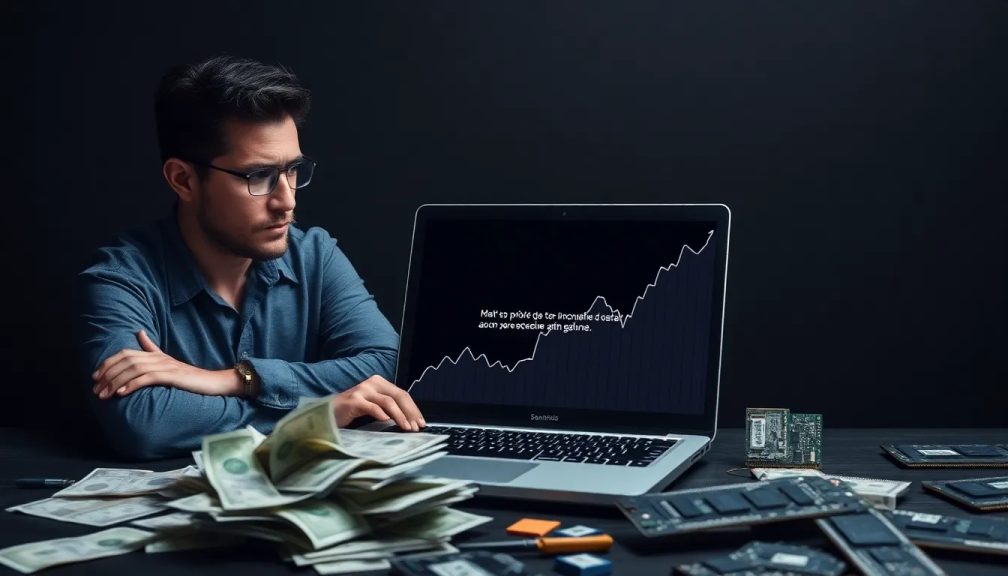RAM price increase may raise technology costs

As technology continues to evolve at a rapid pace, the demand for high-performance computing components is soaring. Among these components, RAM (Random Access Memory) plays a critical role in determining the overall performance of devices, particularly in gaming laptops and PCs. However, recent news suggests that consumers may soon face higher prices for RAM, potentially impacting the cost of new technology. Let's explore the factors driving these changes and what they mean for buyers.
Current trends in RAM pricing
The landscape of RAM pricing has seen significant shifts in recent months, prompting concerns among consumers. Recent reports indicate that major manufacturers, including Samsung, are set to increase prices for both DRAM and NAND flash memory. This surge in costs can be attributed to several factors, including production limitations and increased demand for high-performance memory.
Understanding the types of RAM and their applications
To grasp the implications of rising RAM prices, it's essential to understand the types of RAM commonly used in devices:
- DRAM (Dynamic Random Access Memory): This is the most common type of RAM found in PCs and laptops, crucial for running applications and multitasking.
- NAND Flash Memory: Used primarily in SSDs, this type of memory provides storage solutions that are faster and more efficient than traditional HDDs.
- LPDDR (Low Power DDR): A variant designed for mobile devices such as smartphones and tablets, offering lower power consumption.
Reasons behind the expected price surge
Several factors are converging to drive up RAM prices:
- Production shifts: Manufacturers are increasingly prioritizing DDR5 and HBM (High Bandwidth Memory) production, which offer better performance and higher profit margins compared to DDR4.
- Increased demand: The rise of AI applications and high-end smartphones has generated a surge in demand for faster and more efficient memory solutions.
- Market dynamics: Global economic factors and supply chain disruptions continue to affect production capabilities and costs.
Predicted price increases for different RAM types
According to industry insights, the anticipated price hikes are expected to vary across different types of RAM:
- DRAM: Expected increases between 15% and 30% for LPDDR memory used in laptops.
- NAND Flash: Price hikes projected at around 5% to 10%, impacting the cost of SSDs.
Impact on consumers
With these price increases on the horizon, consumers may soon feel the financial pinch:
- Gaming laptops: The cost of high-performance gaming laptops could rise significantly, making it more challenging for budget-conscious gamers to upgrade.
- Timing of price increases: Experts predict that the impact will start to be felt by consumers as early as Black Friday 2025, making it crucial for prospective buyers to plan ahead.
- Buying strategies: Those looking for reasonably-priced laptops should consider purchasing sooner rather than later, or start saving for their next upgrade.
Future of RAM pricing: What to expect
As we look ahead, it's essential to consider how these trends may continue to evolve:
- Long-term price fluctuations: As technology advances and production methods improve, prices may stabilize, but short-term volatility is likely.
- Influence of new technologies: The introduction of new memory types, such as DDR5, could alter market dynamics and affect pricing structures.
- Global economic factors: Ongoing supply chain issues and international trade relations will continue to influence RAM pricing.
Conclusion
As manufacturers adjust their pricing strategies in response to market demands, consumers must remain vigilant about potential price increases in RAM and related components. Understanding the factors driving these changes, as well as the types of RAM available, will empower buyers to make informed decisions in a rapidly changing technological landscape.
For more insights on current trends and the future of PC hardware prices, check out this informative video:




Leave a Reply